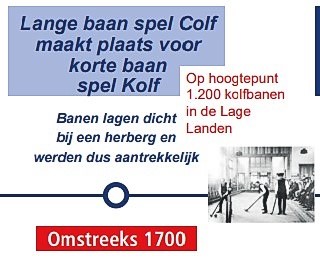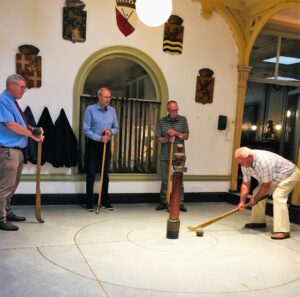Around 1700: Long course game Colf makes way for short course game Kolf
When, around 1700, the colf game had become too dangerous for the environment (church windows, windows and bystanders), the game was banished by the city council to outside the city walls. But with that, the innkeepers lost their business, because the door of the inn was customary at Colf as a terminus. That is why they embraced pumping, which could be played next to (or in) the inn.
Kolf lanes were originally not covered, but more and more often they were covered. The Kolfbaan in Wormer was covered in the second half of the 19th century after it had been an open-air rink behind the inn for years. This also applies to the kolf track in the Sint Eloyen Gasthuis in Utrecht, which was also first in the open air and then covered.
This also applies to the kolf track in the Sint Eloyen Gasthuis in Utrecht, which was also first in the open air and then covered. At both ends of the track, two meters from the side, there is a pole diagonally in the ground.
The entire course is divided into 12 sections from the front post. Between the posts sections 1 to 6 and behind the rear post 6 small compartments from 7 to 12. These boxes indicate the point score, this is the box in which the ball ends up in the scoring stroke.




